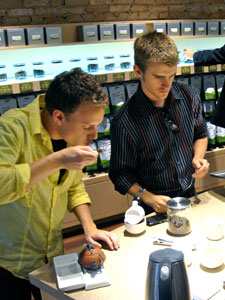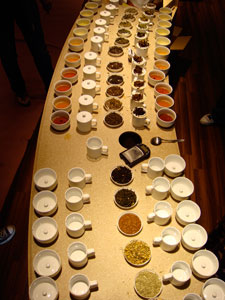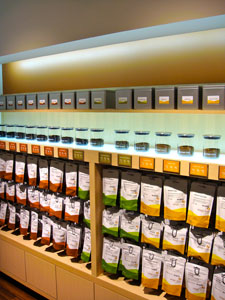Opportunities abound in Tea Retail




I’ve received dozens of emails and requests for comment in the wake of Teavana’s announcement late last month that they are planning a $100 million IPO to fund 350 new stores in the coming years. I’m hearing two basic questions: What does this mean for the tea industry, and how can a small tea business compete?
The questions used to be, how can Teavana afford the high rents in premium malls, and are they really profitable? The IPO filing (summary here) answers that pretty emphatically. Teavana boasts 146 US stores AVERAGING $826,000 in sales and $162,000 in profits per store. There is obviously a lot we can learn from a company this successful. There are a lot of doubters out there that need to eat a little humble pie and recognize that you don’t accomplish this kind of growth and success without making a lot of real customers very happy.
In answer to the first question, what does this mean for the tea industry, I firmly believe that Teavana's IPO is VERY good news. While they do a lot of things right, are a formidable competitor, and have a significant lead, they are not and cannot be all things to all people. There is plenty of room for additional players in this field. Teavana has demonstrated that real money can be made if you run a solid business. My hope is that the evidence of their success may help smaller companies and entrepreneurs (who have the vision but lack the capital and the experience) to convince experienced investors to get into the game.
In answer to the second question, how can a small tea business compete, I’d like to suggest five key strategies.
1. Create a rich customer experience. The average Teavana store is 915 square feet, including the back storage room. This leaves little space for browsing teaware much less smelling or cupping teas. The tight quarters and operational design requires a customer to interact with a sales person in order to even look at any of the teas hidden behind the counter. On a busy day, customers have to wait even to shop, much less buy. It takes a little more space, but there is definitely an opportunity to create a richer, more engaging experience around the tea itself.
2. Tell a story. Teavana has a great corporate story, but I don’t often hear about the gardens they buy from and they certainly don’t have the luxury of putting the owner behind the counter greeting customers. Customers love a personal touch and a feeling of connectivity with the history, culture and tradition of tea. It’s very hard for a big company to do that using part time labor in a shopping mall environment. Tell the story of the tea, of your staff, and of the dream that attracted you to the tea industry.
3. Pricing. An independent tea retailer may have some trouble competing with Teavana on margin (given the company’s volume), but competing on price should be no problem. Rooibos is as close to a commodity as you get in this business, and even the smallest independent retailer should be able to buy Rooibos (plain or flavored) on the US wholesale market, match Teavana’s pricing, and still get margins of better than 80%. Margins on teaware will be a lot tighter (closer to 50%) but Teavana is no discounter so independents should have no trouble competing on price. (More on pricing and margins here)
4. Volume. While low volumes make it harder for independent tea retailers to get great wholesale pricing, they also make it much easier to experiment and adjust to your local market and customer base. While Teavana will only buy a tea if they can get enough for all 161 stores (US and Mexico), independent retailers have the luxury of buying small lots, testing new flavors, or even carrying teaware made by local artisans. There is an automatic cache tied to any product that is available in limited quantity, ESPECIALLY if it has a great story!
5. Community involvement. From what I’ve been told by current and former employees, Teavana managers are prohibited from engaging with their local community. No products at the farmer’s market, no samples at the bank down the street, and no talks at the local yoga studio. I’ve had great success over the years working with local bakeries, restaurants and chocolatiers to create tea infused products to sell both in my store and through their establishments. There are all sorts of ways for an independent retailer to engage the community and get the word out.
At the end of the day, every other successful consumer product is sold through a dizzying array of channels, and tea will be no different. Teavana is the first tea retailer to really break out in the US, but they won’t be the last. Opportunity abounds for entrepreneurs with the passion and creativity to capitalize on strategies that cannot be easily copied by a chain, no matter how successful they are.
Adagio Teas
Twitter: @AdagioRetail
